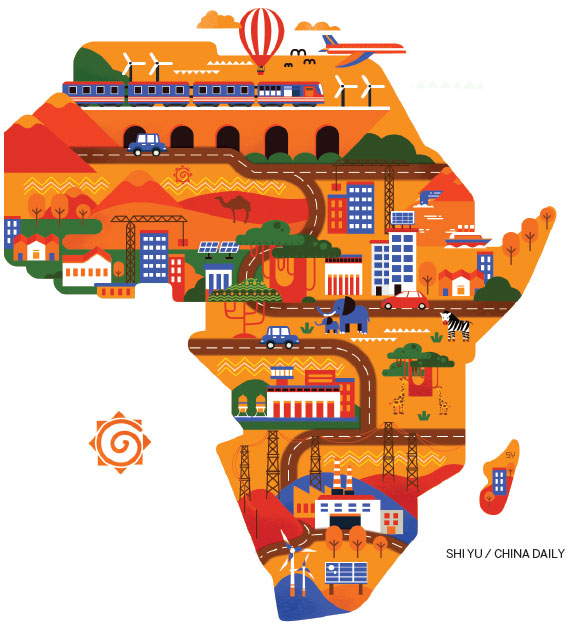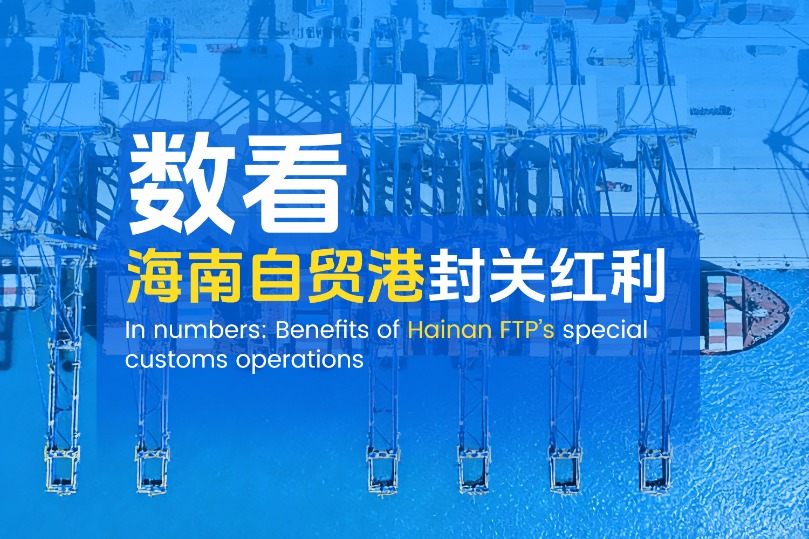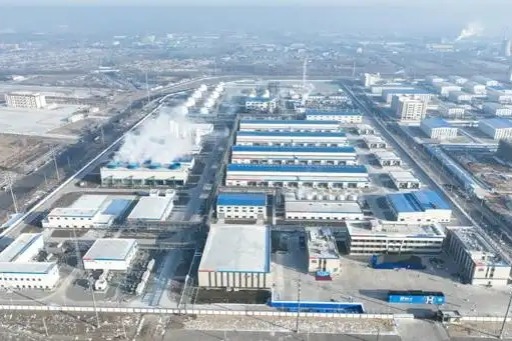Lighting up

China is helping Africa tackle power shortages by boosting generation capacity, bringing illumination to the 'Dark Continent'
In the era of the Belt and Road Initiative, China is heavily involved in enhancing Africa's power generation capacities, alongside other infrastructure development projects.
Indeed, the Asian power house has literally transformed Africa from a "dark" to a "lit up" continent, thanks to numerous completed, ongoing and proposed projects aimed at addressing power shortages.
According to Zachary Ochuodho, an economist at Zimsky Consultants, Africa stands to benefit further in terms of infrastructure development by Chinese companies, noting that enhancement of infrastructure construction is one of the important aspects of the initiative.

"I encourage as many African countries as possible to join the Belt and Road Initiative so that they can enjoy improved infrastructure, which will consequently enhance their economic growth. African state leaders should also consider attending the upcoming Belt and Road forum," he says.
Ochuodho says Chinese companies have invested a lot in infrastructure development in Africa, targeting key sectors like transportation, telecommunications, construction, power plants, port refurbishment and waste disposal.
Chinese companies have completed 1,046 projects in Africa and built a total of 2,233 kilometers of railway lines and 3,350 kilometers of highways, according to research and innovation lab AidData.
World Bank statistics show that year-on-year economic growth in Sub-Saharan Africa has been slashed by 2 percent points due to lack of infrastructure. About $93 billion must be invested each year to reduce that deficit and bring Africa's infrastructure to a level comparable with other developing economies. Currently, the investment shortfall stands at $40 billion a year.
Power has been singled out as Africa's biggest infrastructure weak point, with as many as 30 countries facing regular power outages, according to World Bank statistics.
The low rate of electrification has been identified as the major impediment to the continent's economic growth, more important than access to finance and problems with red tape and corruption, according to the International Energy Agency, a Paris-based autonomous intergovernmental organization.
According to the African Union, the continent's collective GDP is expected to multiply by sixfold between 2010 and 2040. To fuel this growth, the AU estimates that Africa will have to increase its power generation capacity from 590 terawatt hours to 3,100 over the same period.
However, Chinese-built power projects and financial support are significantly contributing to the development of Africa's power sector, expanding energy access as well as facilitating economic growth.
In Sub-Saharan Africa, for instance, China is responsible for 30 percent of new capacity additions in the region over the past five years, according to a report by the IEA.

Since 2010, Chinese contractors have completed more than 200 major projects in the region, equivalent to 17 gigawatts of installed generating capacity. That equals about 10 percent of Sub-Saharan Africa's entire provision of electricity.
Almost three-quarters of Chinese built additional coal-fired capacity is in Southern Africa, a region with high coal resources. In West Africa, most of the Chinese-built capacity is in gas fired power plants, especially in Nigeria, which has plentiful natural gas resources. A project totalling 1.5 gigawatts has just been completed in the country.
In East Africa, Chinese hydropower projects account for 60 percent of generation capacity additions. In Uganda, for instance, the Karuma hydropower dam, to be completed in 2018, will add 600 megawatts of capacity.
James Chester, content director for Africa Oil & Power, an elite event organizer for energy investment and policy in Africa, says Chinese investment is playing a vital role in the expansion of Africa's power sector.
"With over 600 million people in Sub-Saharan Africa lacking access to electricity, these big investments in new generation capacity are crucial to the development of Africa's energy sector," he says.
Ken Tarus, acting managing director and CEO of Kenya Power, a state corporation responsible for transmission, distribution and retailing of electricity, says the Chinese government has contributed a lot in terms of funding and technical capacity in the development of the electricity subsector in Africa.
AidData says Chinese development finance in the continent stands out because it is concentrated almost entirely in Sub-Saharan Africa, while Europe and the United States assist North Africa (41 percent and 30 percent, respectively).
Chinese official financing in Sub-Saharan Africa's energy sector was more than $16 billion between 2000 and 2012, AidData estimates.
This makes China the largest development partner in the energy sector, with 41 percent of total commitments, compared with 18 percent from the European Union ($7 billion), and only 1 percent from the US ($500 million).
The Heritage Foundation estimates the value of contracts awarded to Chinese companies for the renewable power generation sector in Africa to be more than $18 billion between 2005 and 2012. These contracts were all in the hydroelectricity sector.
While projects by Chinese companies cover almost the entire electricity mix, hydropower dominates. This is because the continent has huge hydropower potential that is yet to be developed.
According to the United Nations Industrial Development Organization, Africa has 1,750 terawatt-hours of hydropower potential and 14,000 megawatts of geothermal potential.
The continent receives abundant solar radiation through the year, and recent studies have confirmed the availability of abundant wind energy resources along some of the coastal and inland areas of Africa. There are also large deposits of coal in Southern Africa.
However, these energy endowments remain largely underutilized. For instance, only 5 percent of the continent's hydropower potential and 0.6 percent of it geothermal potential have been exploited.
These opportunities have attracted Chinese State-owned as well as private companies that are also driven by their desire to explore overseas markets and promote trade between China and the rest of the world, in response to the government's "Going Global" strategy launched in 2006.
China Gezhouba Group Corp, China National Electric Engineering, China International Water and Electric Corp and Shandong Electric Power Construction Corp are some of the State-owned companies that dominate projects on the continent. Other companies include Power Construction Corp of China (PowerChina) and GreatWallDrilling Co.
PowerChina, a multinational group with headquarters in Beijing, is undertaking 600 projects in Africa's power sector.
Noting that China is oversupplied in terms of power investments, Wang Bin, the vice-president of PowerChina, says the company is moving its investments to Africa to enable the continent to meet its economic and social development needs.
"In each of the African countries, there is a cycle of power shortage and power surplus. We want to partner with African countries and help them generate more power," says Wang.
Last year in July, ChinaPower completed its first African electricity project in Cote d'Ivoire, the Soubre Hydropower Station. The power station, which is the largest in the country, has a total installed capacity of 275,000 kilowatts.
In Kenya, Chinese companies have been awarded tenders to undertake 22 projects in the power sector. The projects are at various stages of implementation, with the majority still undergoing memorandum of understanding finalization, says Kenya Power's Tarus.
The projects cover increased generation capacity (solar plants and geothermal projects), transmission line funding and construction, distribution line upgrades and network modernization expansion projects, and supply of electrical materials and equipment.
Speaking recently during the commissioning of 14 wellhead units drilled by Great Wall Drilling, with a total production capacity of 75 megawatts, Kenyan President Uhuru Kenyatta described geothermal power as the most reliable and cheapest, adding that Kenya is among the top 10 producers of such energy worldwide.
He expressed gratitude to the Chinese company for its exceptional work and the Export-Import Bank of China for financing the project.
"The 75 megawatt units are a unique innovation success story: Once we had towait between five and seven years from drilling of the first well to the installation of a geothermal plant. Now, we have cut that period to between two and three years," Kenyatta said.
He added that the drilling process saw Great Wall Drilling invest millions of dollars in the drilling of the steam wells and the installation of the highly innovative units. "This technology has sharply cut the cost of investment in drilling," he said.
Chester of Africa Oil & Power says Africa's overall power generation capacity, which stands at about 150 gigawatts, needs to be quadrupled in the next 10 years to get up to speed with population growth and power demand. He urges Chinese companies to take advantage of the opportunities.
"There is a substantial opportunity in expansion of access to electricity by creating 'last mile' connections to the power grid. For example, between 2010 and 2020, 120 million people in Sub-Saharan Africa are expected to gain access to power through improved grid development, as well as new power generation capacity," he says.
Africa needs $30 billion in annual investment through 2030 in order to reach universal access to power generation, he says. "The future of Africa's power sector and many countries' ability to reach universal power access as quickly as possible is highly dependent on continued investment from China."
Chester adds that Chinese stakeholders provide the continent with high-value technologies, especially in hydropower and renewable power solutions. In addition, China is able to both finance and build the projects, often at a lower cost than competitors.
Chinese terms are considered to be very competitive in many African countries for several reasons, he adds. First, construction costs by Chinese companies are often lower than other international competitors. Traditionally, China also offers a "no strings" approach to lending - as opposed to many other governments, which are more likely to impose conditions and restrictions, he says.
These factors often make Chinese investment in Africa popular, with 70 percent of Africans having a favorable view of Chinese investment, according to a Pew survey.
"Chinese investment in Sub-Saharan Africa's power sector made up one-fifth of all power sector investments between 2010-2015, totalling $13 billion," says Chester. "The Export-Import Bank of China is especially active in lending to African governments."
Additionally, China is willing to invest in countries that are perceived to be more risky, such as Burundi, the Central African Republic, the Democratic Republic of the Congo, South Sudan and Eritrea.
"Chinese investment is unique in that it is everywhere in Africa, while many other international investors are focused on resource rich countries. Chinese investment has been key to boosting power in Ethiopia, for example, which is not endowed with huge mineral or oil and gas wealth, and has no access to the ocean," says Chester.
edithmutethya@chinadaily.com.cn
| Left: Kenya President Uhuru Kenyatta (center) at the 158mw Olkaria V geothermal project ground breaking ceremony on April 28, at Naivasha, Kenya. Right above: Kenyatta delivers a speech at the 75mw geothermal wellheads commissioning ceremony on April 28, at Naivasha. Right below: Kenyatta operates the machine during the ceremony at Naivasha. Photos by Sun Ruibo / Xinhua |
(China Daily Africa Weekly 05/05/2017 page1)
Today's Top News
- China warns about Japan's intended military buildup
- China urges EU to halt anti-subsidy probes
- Experts: Lai not freedom fighter, but a pawn of the West
- Hainan evolves as gateway to global markets
- Opening up a new bridge between China and world
- Tour gives China-Arab strategic trust a boost































